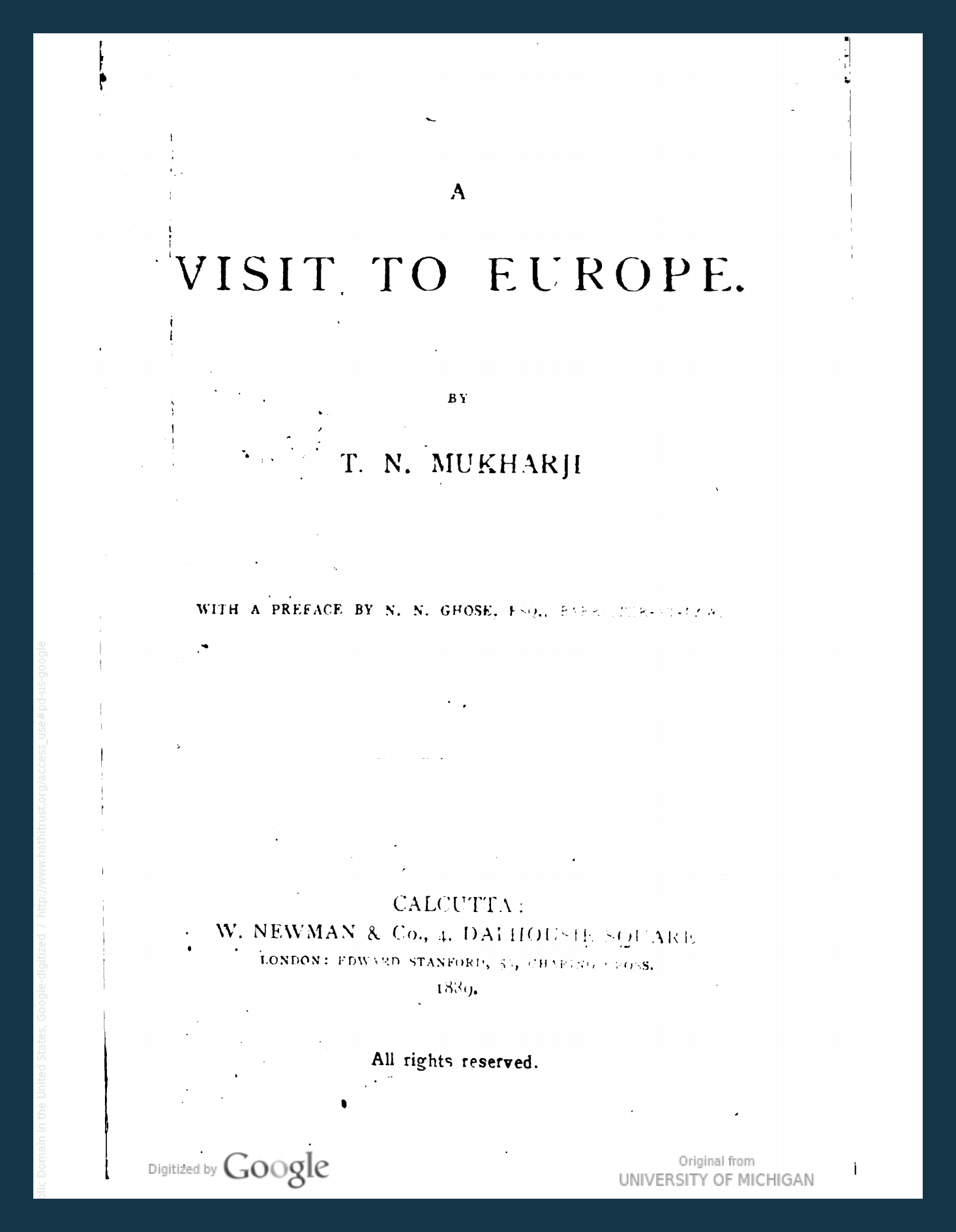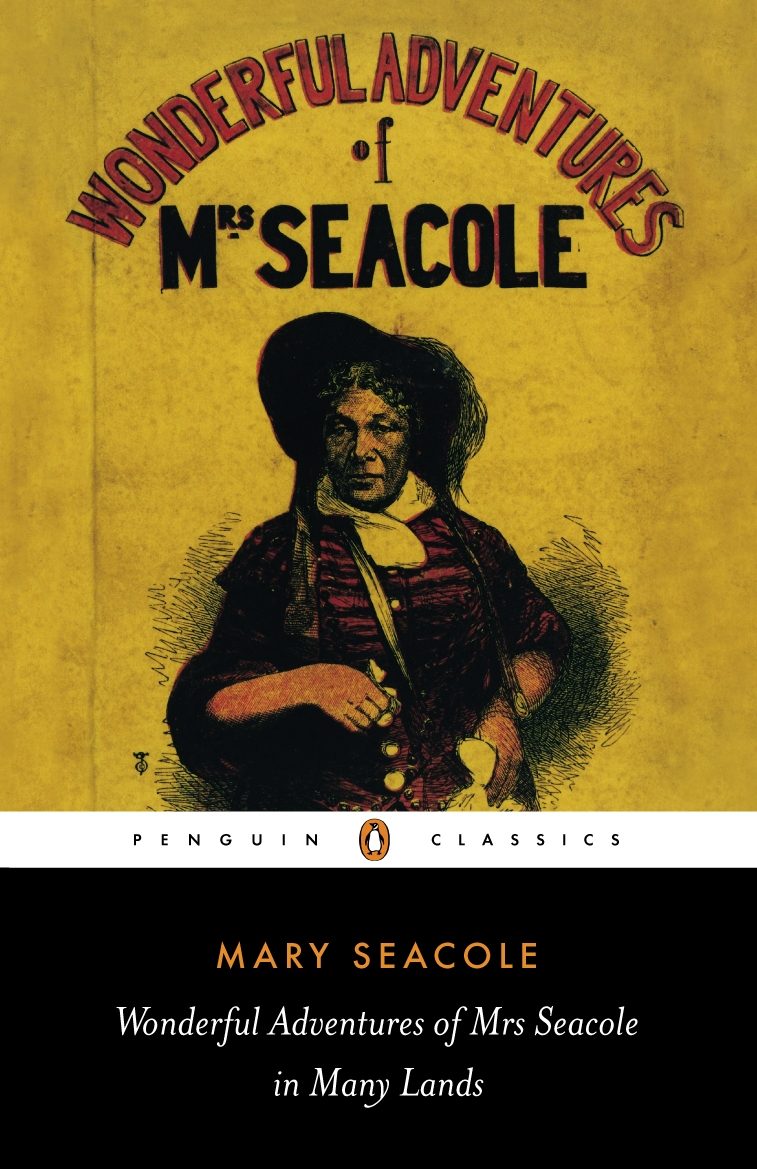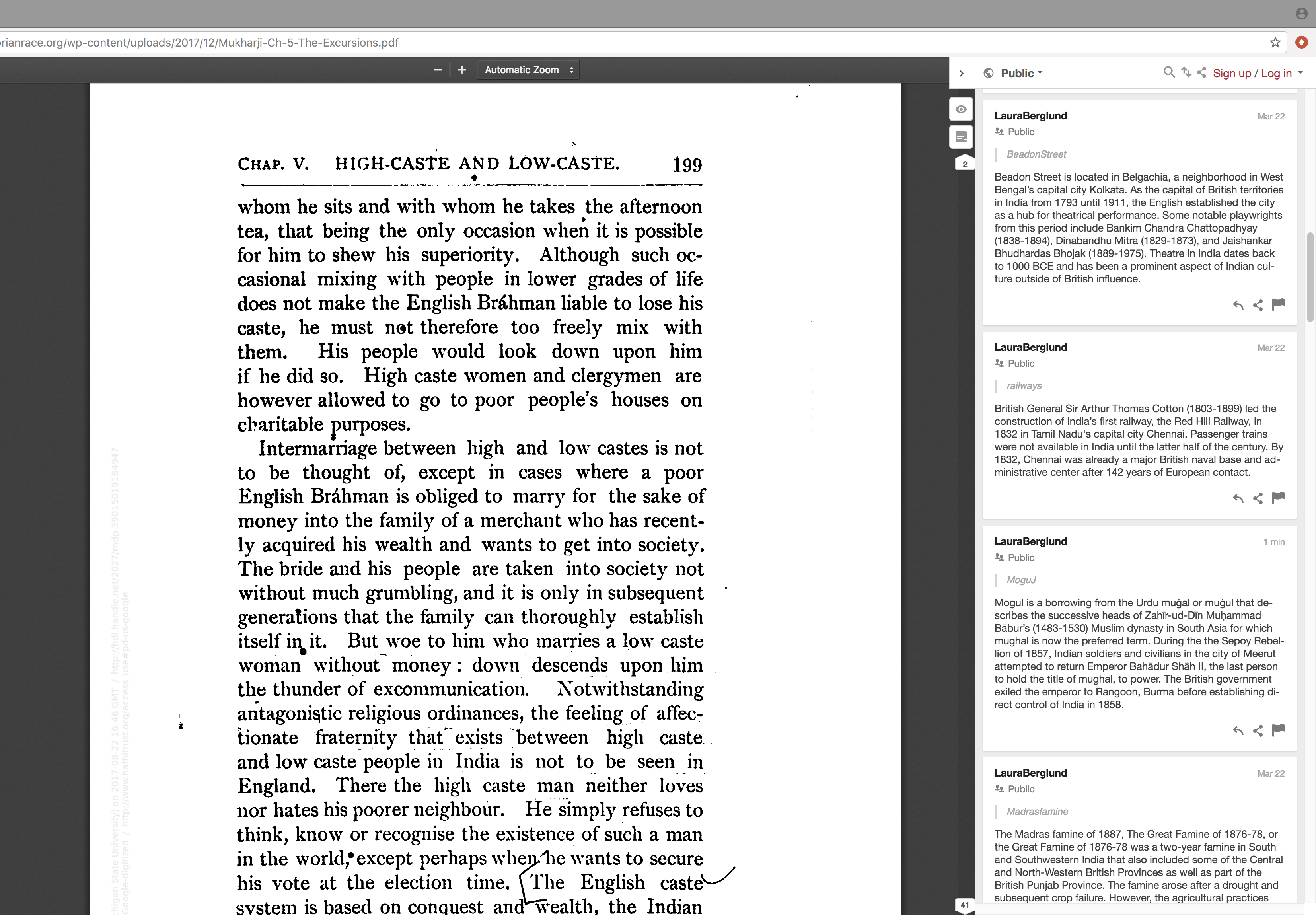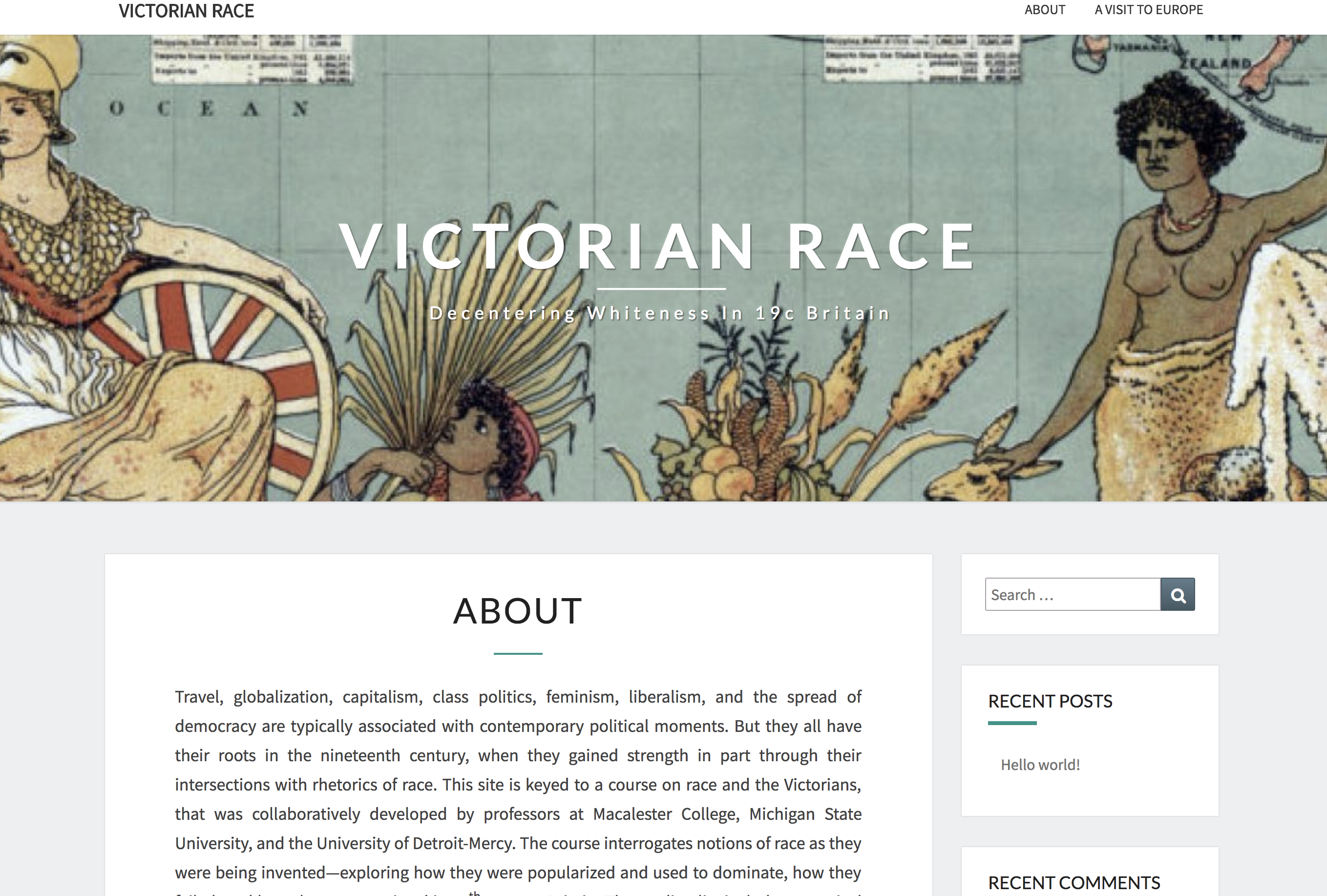Work in progress: Race and the Victorians Digital Project
Contact
The Words: Macalester's English Student NewsletterSenior Newsletter Editors:
Daniel Graham '26
Callisto Martinez '26
Jizelle Villegas '26
Paul Wallace '27
Associate Newsletter Editors:
Rabi Michael-Crushshon '26
Laura Berglund ’20

Queen Victoria, Oscar Wilde, fancy clothes, and travel narratives; these were some of the concepts that arose on the first day of Race and the Victorians, a topics course that explores the conceptualizations of race that shaped popular thought in nineteenth century England. This course is unique in that our final project, a digital scholarly edition of T.N. Mukharji’s 1889 travel narrative A Visit to Europe, involves collaboration with Michigan State University and the University of Detroit Mercy. Our professor, Andrea Kaston Tange, has connections with faculty at both of these institutions.
To preface this work, we dug through theoretical texts from the period and encountered scientific racism along with poor, or altogether nonexistent, research methods. In addition to instances of racism that are still present today, phrenologists used the term race to describe socioeconomic groups, and we even encountered mentions of the “criminal race.” A sense of hierarchy was obvious, but it was unclear as to how we should define it without engaging in apologetics.
The novels and biographies that followed offered similarly complex questions. The anonymous epistolary novel The Woman of Colour (1805), and Mary Seacole’s 1857 personal narrative Wonderful Adventures of Mrs Seacole in Many Lands brought the experiences of Jamaican women of color into our conversation.These texts resisted imperialism by challenging notions of inferiority. However, we were left wondering about the extent to which they were written to please a white English audience.

It is impossible and feels unjust to arrive at a single conclusion about the purpose of a historic text. For instance, when is it valid to relate contemporary experiences and beliefs to nineteenth century literature? More information, rather than attempts to generate specific answers, may be the best approach to parsing through these works’ complexities. Cue appendices, annotations, and scholarly introductions: the parts of a book you may be tempted to skip and the basis of our work with A Visit to Europe.
Mukharji, a Bengali Brahman, wrote this piece to relate his experiences in England during the Colonial and Indian Exhibition of 1886, which he helped organize. In 1889, the narrative was published in Calcutta in English with what we believe to be an Indian audience in mind although Mukharji gave Queen Victoria a copy. The narrative is out of print so the fact that it’s the focal point of the course feels like a meaningful contribution to scholarship. This piece is also unique in that, as Professor Kaston Tange explained in class, it is incredibly rare to encounter a Victorian travel narrative where the author uses the term here to describe somewhere other than Europe and the term there to describe Europe. Consequently, A Visit to Europe is invaluable in terms of the perspectives it offers on imperialism and the various issues this system encompasses.

Each student is responsible for using Hypothesis.is, a digital platform that allows users to create and view other users’ annotations across webpages in order to annotate a section of the text with information that expands on terms or concepts. Teams within each institution are in the process of choosing scholarly articles and primary sources to include as appendices. My partners and I, for example, sought out texts that reflect anti-colonial efforts and sentiments during the Victorian era and shared them with each other via Slack’s online coworking platform. Everyone involved in the project will also write scholarly introductions for A Visit to Europe. Our final product will be an extensive compilation of supportive texts and original writing.
The edition will be available on victorianrace.org by the end of April. It will offer diverse perspectives on intersections of identity and colonialism that build upon the variety of arguments Mukharji poses in the narrative itself—he praises the English in some moments and criticizes them in others. However, through the diverse voices we are putting into conversation around this piece with supplemental materials, I expect a starting point for further inquiry rather than a comprehensive portrait of Mukharji’s piece will emerge.
